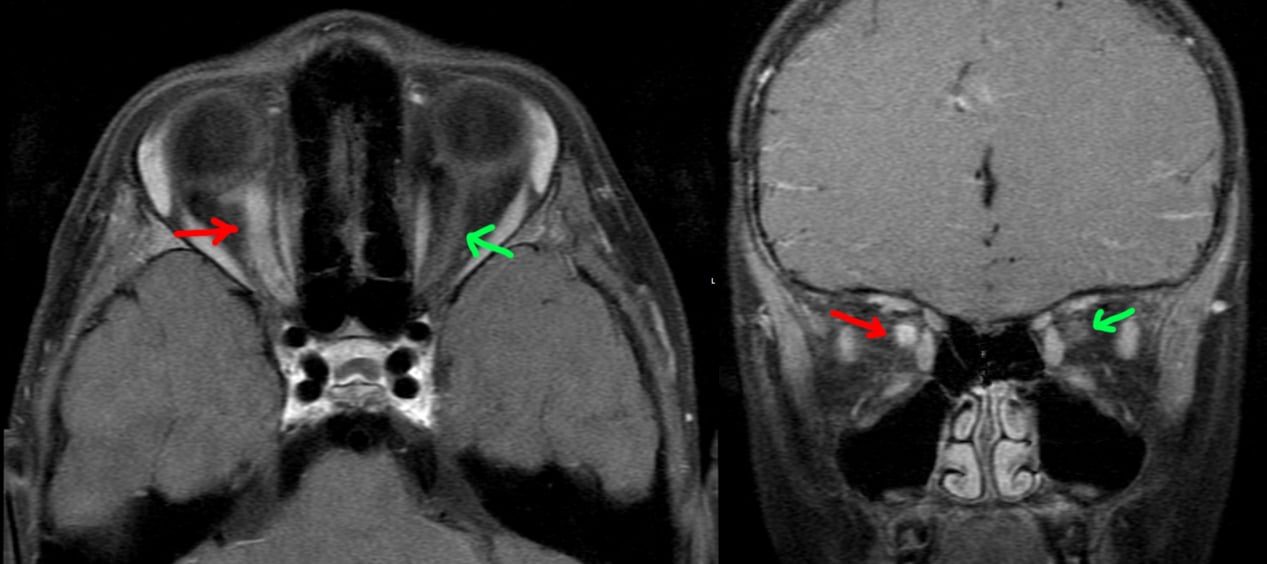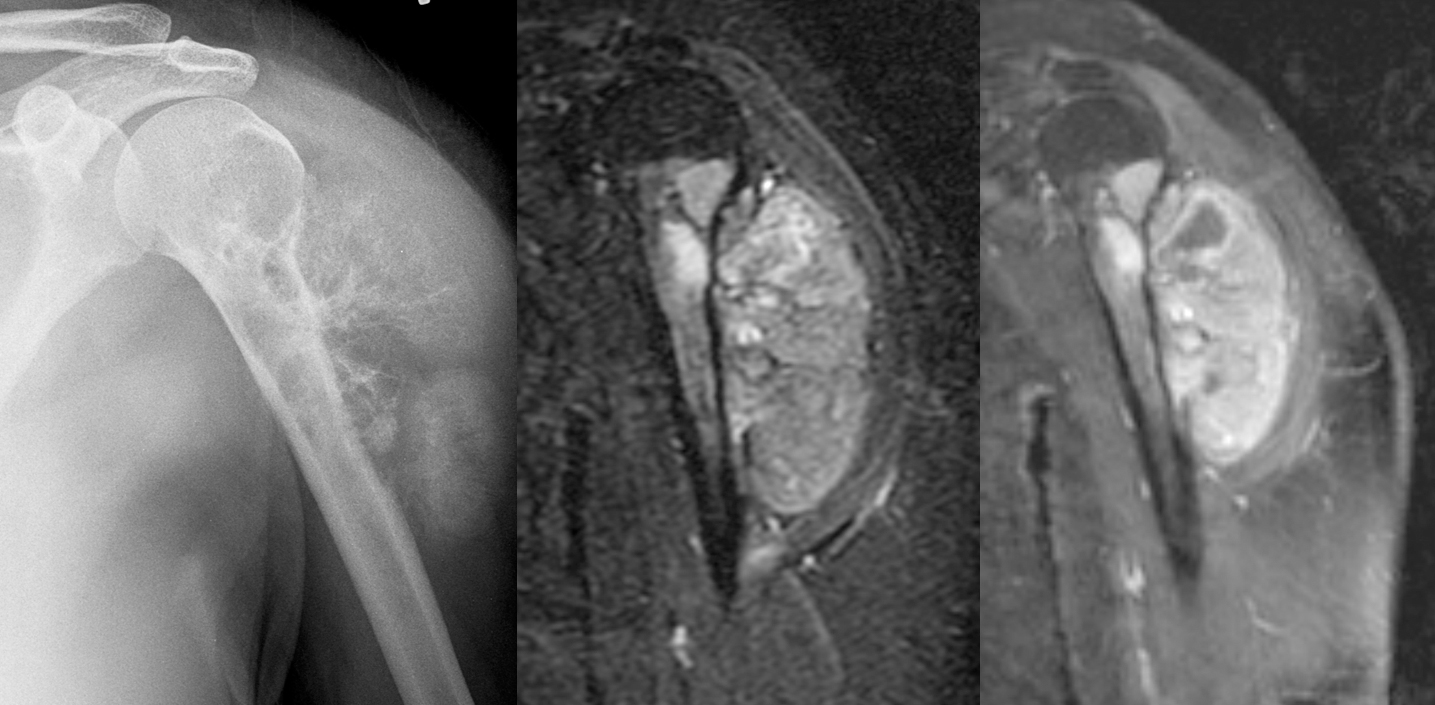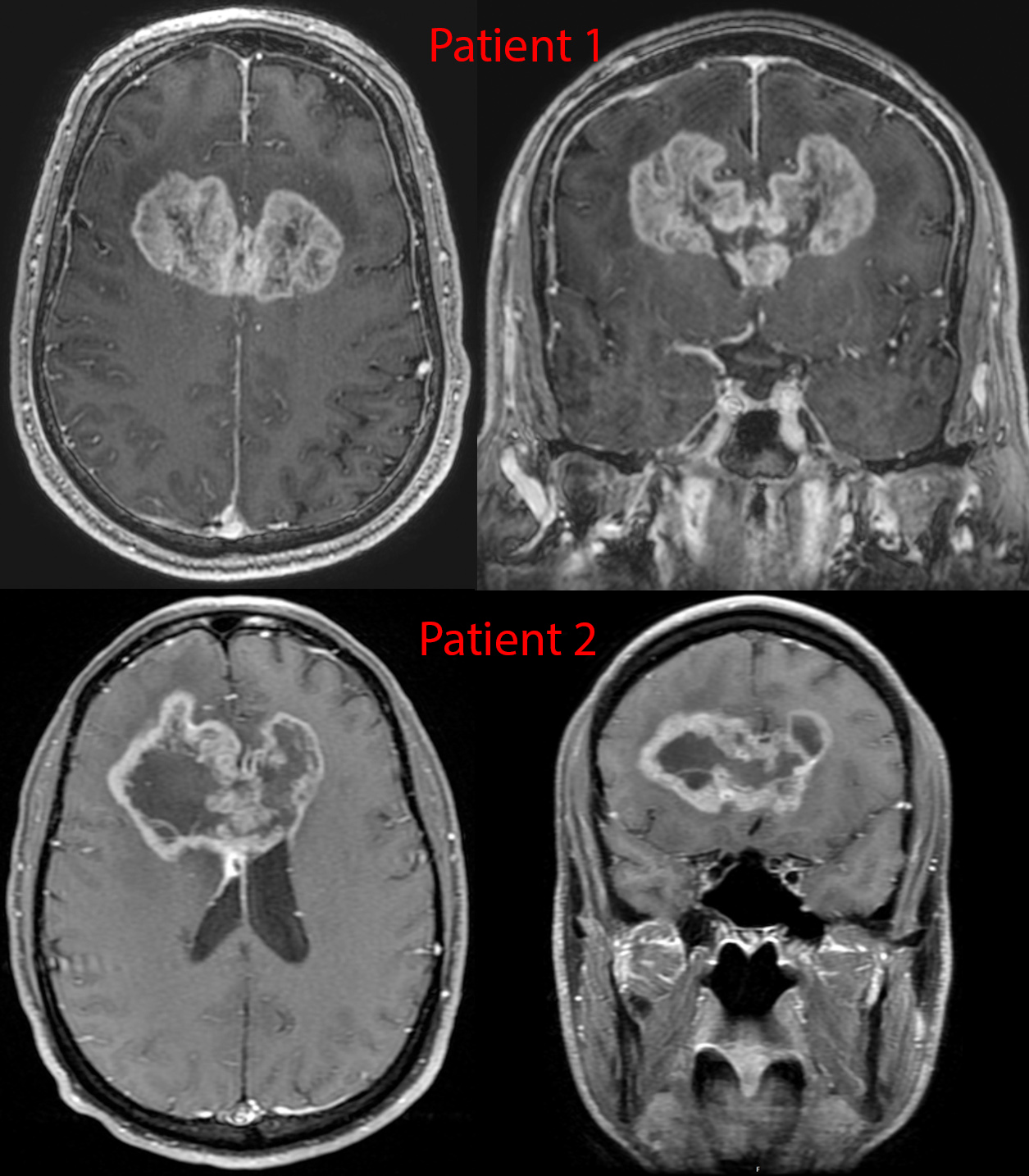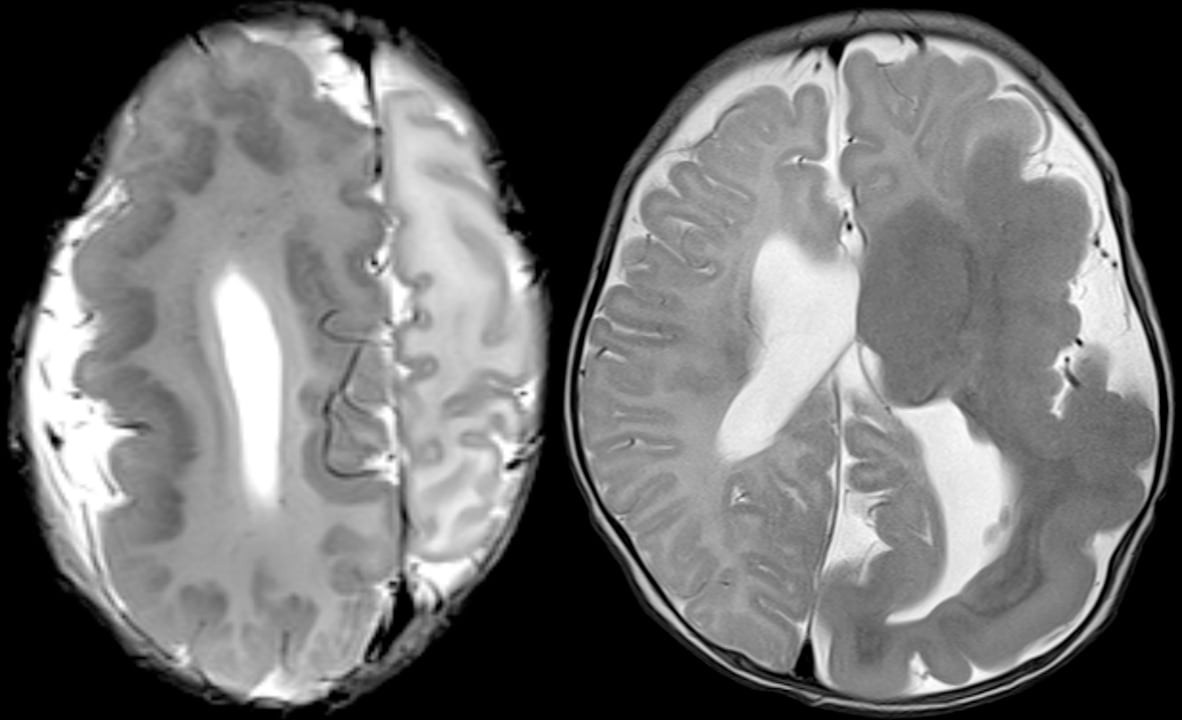It's not, but it's very painful.
No they don't all calcify.
The tumor here is growing from the bone and destroying it. The normal bone cells are trying to repair by making more bone. If faster the tumor destroys and grows, the less smooth the repaired bone can look.
Yeah they can decompress by removing part of the back of the skull so there’s more space.
Hi. Try to match the outline of the humerus to that on the radiograph. Then the big bright mass to the right of the humerus (going by the picture) is the cancer. Now see if you can make out the rough outline of it on the radiograph.
The cloudiness you're seeing is calcification within the tumor. Specifically, the outward "tendrils" (as someone else called it) exploding out from the margin of the humerus is really aggressive periosteal reaction, which I've posted a few examples before already: one, two.
I think while the general communities have made it, a lot of niche communities failed to attract enough population to keep on generating more content. As an example, just search for the "Imaginary" series of landscape art communities on the Fediverse (eg. ImaginaryVistas). Many of them don't have any recent posts or 1 post per days or weeks. That's not enough to keep people invested. Even the largest digital art community is still mostly carried by 1 person.
The Lord said that the "VCR shall be saved" with the knife technique, but in the following paragraph, it was not the VCR that was saved, but the man that was saved. The VCR was not saved!
Developmental delay, seizures, cerebral palsy, autism, depending on severity.
It's usually barium sulfate, which can have a more viscous consistency that makes it go down a little slower and allows it to stick to things to outline them. But yes, regular iodine contrast can also be used.
Yep. They're in the middle of swallowing some liquid contrast. Take the picture 1 second later and you miss the shot.
It looks like it could fall over with any gust of wind and kill someone.










Much further back… Abraham Lincoln was a Republican. The party was founded on anti- slavery. The current party has nothing to do with the original party.